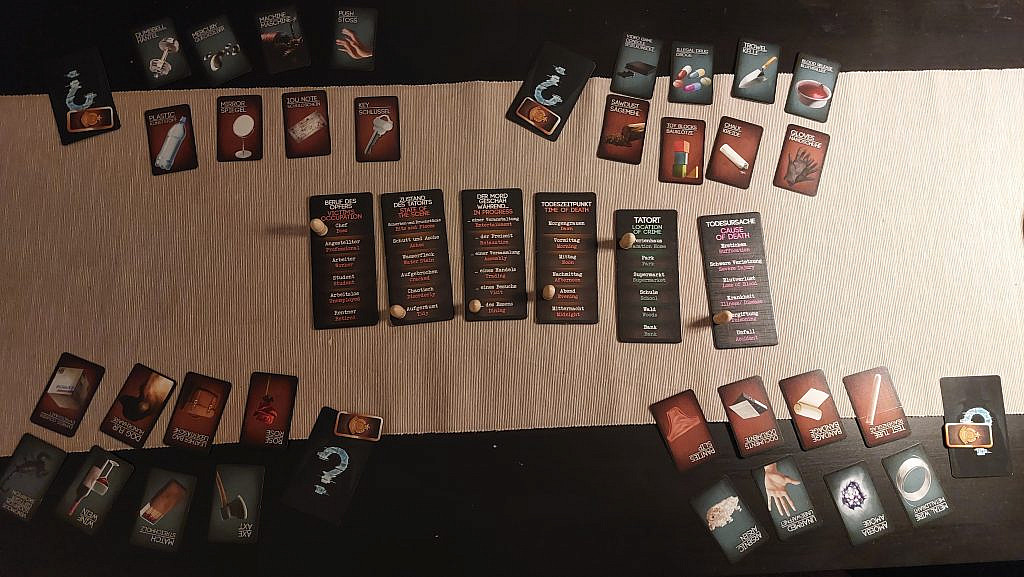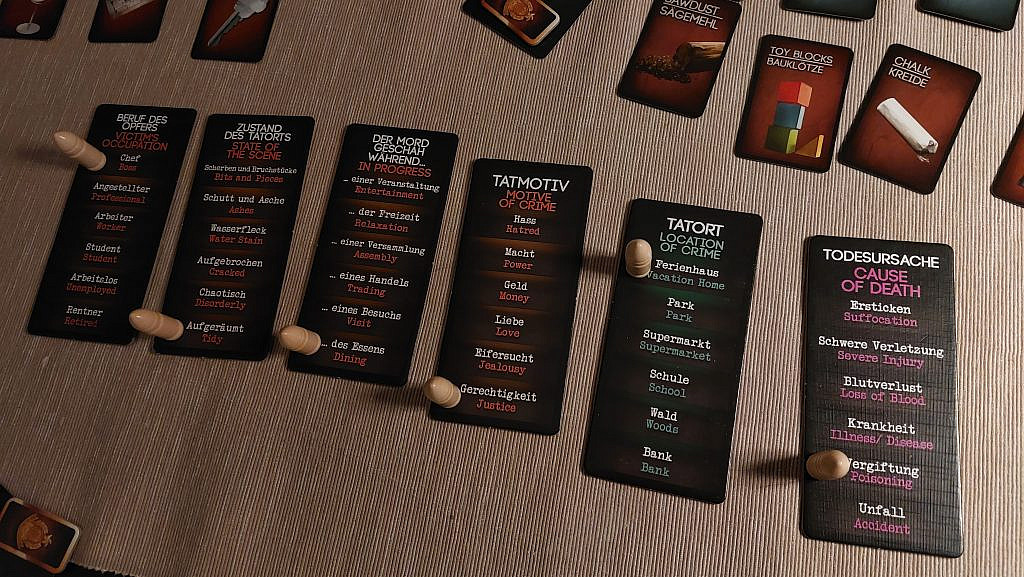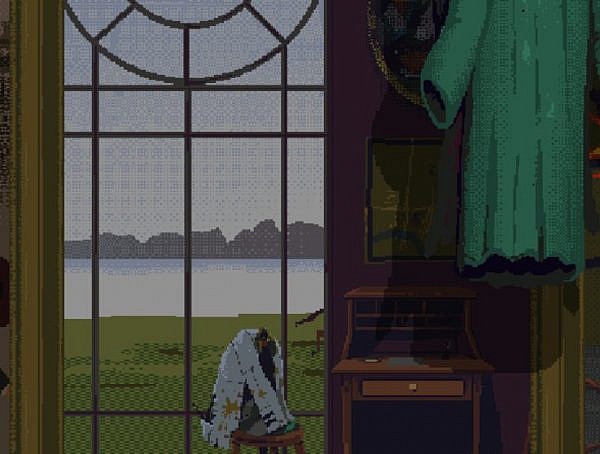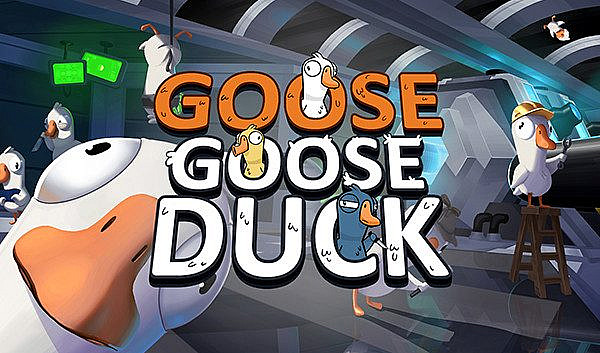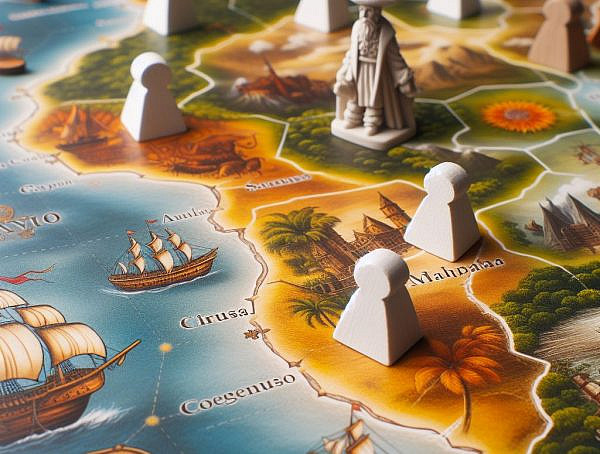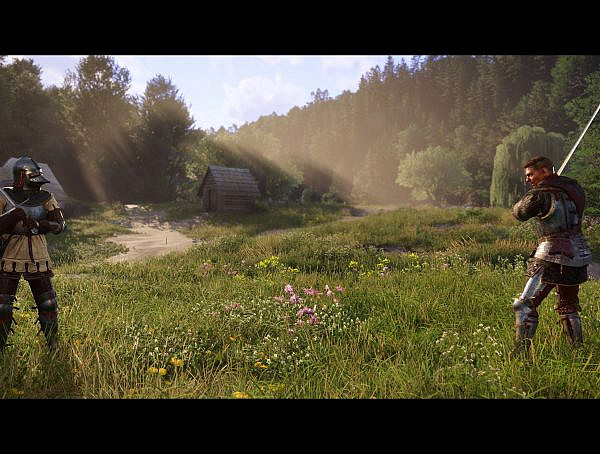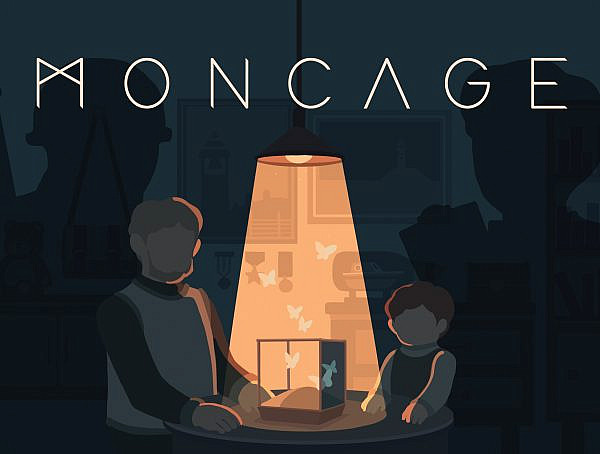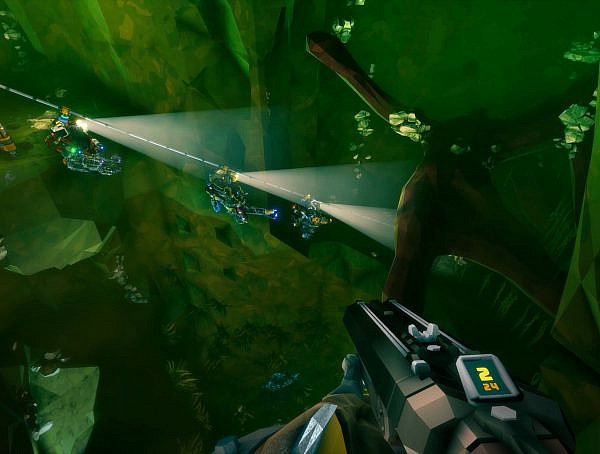Another cold night in Hong Kong, another cold-blooded murder. A forensics scientist lays out a report on the investigators’ table. The victim was the boss of a local company. The state of the crime scene was… tidy. The crime happened in the evening, while the victim was still dining in his vacation home. Cause of death? Poisoning.
The forensics scientist observes silently as detectives discuss possible theories: after all, one of them IS the killer. “What’s the murder weapon? Drugs? Arsenic?”, one asks. “We need a connected clue too…”, another one adds. One investigator exclaims: “Let me solve the crime. It was Mr. A! He released a venomous scorpion into the victim’s apartment and left behind a rose as a clue; it was a crime of passion.”. Everyone turns to the forensics scientist. “No”, the scientist replies. The investigator has to give up his badge: he can no longer solve the crime. “Just a few more wrong guesses and I’m free…”, the murderer thinks to himself.
After feverish discussions, the scientist takes out an hourglass. “30 seconds, who is your main suspect?”, he asks the investigators, one by one. All share a different combination of weapon and clue. The scientist nods and removes the tile titled ‘Time of crime’. Then, a new tile appears: ‘Motive of crime’. The scientist places his token on the last option: ‘Justice’. Was time just a red herring? What could ‘Justice’ mean?
“Let me solve this one”, says one detective. “What if one of the victim’s employees died in an accident, perhaps a poisoning? What if the boss tried to silence the suffering employee with an ‘I-owe-you’ note, found in Mr. B’s clue cards? Mr. B also holds ‘Mercury’, a potent poison. That’s what I call ‘Justice’!”. The players turn to the forensics scientist once again. Has the case been solved?
Deception: Murder in Hong Kong is a mystery/social deduction board game for 4 to 12 players. It’s a game about solving a murder by piecing together a story: the silent game master creates a narrative from randomized elements, and the players must connect these dots to form leads. Contexts like location of crime and cause of death are always given, but some aspects can change depending on how useful they are. For the detectives to win, one player must guess both the correct murder weapon and clue from another player, the hidden murderer. Every role requires luck, logic, social deduction, and some imagination, whether you’re cracking the case or finding a scapegoat. To me, Deception is more about the journey than the destination: it can be won with a lucky guess, but at its best, it’s about crafting those wild true crime theories among friends.
Gameplay in Deception is more often about reading the room than reading the rules. If the detectives are confused and frustrated, the scientist must react and simplify things if needed. However, the game elements can be quite ambiguous at times, too: what kind of murder weapon is “Locked room” or “Wine”? Does it matter if a murder happened on a weekday or in autumn? This is where I think the game’s greatest strength can also be its weakness: it’s very open to interpretation and imagination. It can quickly turn into debates about who’s right or wrong and what’s possible, so my recommendation is to suspend some disbelief when playing.
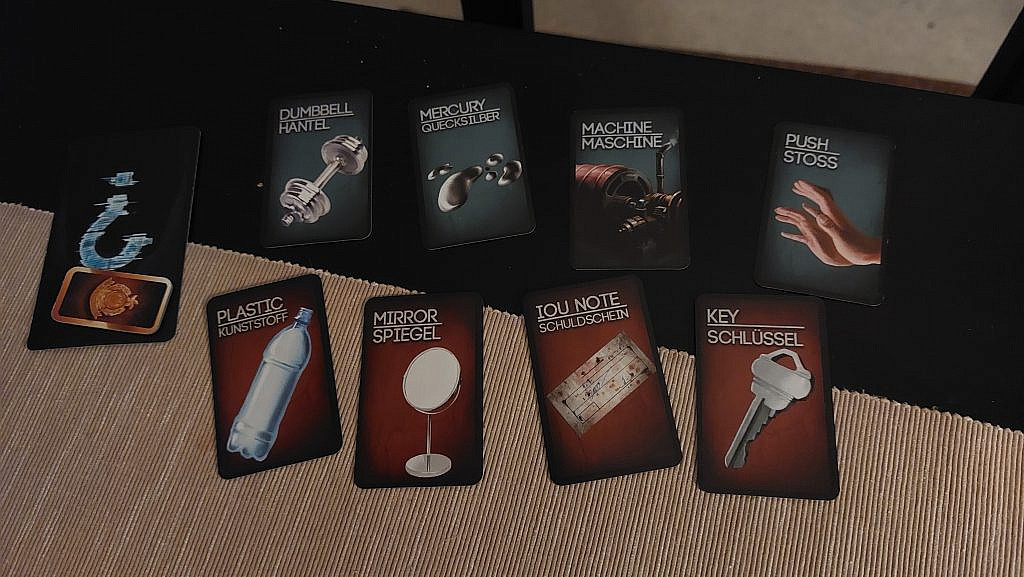
Each player holds four murder weapons (blue cards), four clues (red cards), a hidden role card and a badge.
What I love about this game is its’ endless possibilities in storytelling: every game master can have a different vision for a specific murder. The random elements keep the stories fresh, but the game master still has great creative freedom to add their own twists. It’s a fun party game to get people talking but is also lighthearted enough to not feel like demanding brainwork. When played in the right company and mindset, it’s a game that really lets you feel like you’re in an episode of True Detective, cracking that impossible case.
Basic information:
Designer: Tobey Ho
Publisher: Grey Fox Games
Number of players: 4-12
Released: 2014
Playing time: 20 min+
Ages: 14+
Pictures: photos from Deception: Murder in Hong Kong (2014), taken by the author.
Mikko likes long walks on beaches of Shadow Moses Island, bonfire-lit dinners in Lordran, and travelling around Johto region, hoping one day to catch ‘em all. Besides game design, he also nerds out about music, cooking, and random historical anecdotes.
You might also like
More from Game Reviews
Kingdom Come: Deliverance II – A Sequel Worthy of a Knight
KCD II delivers a living, breathing medieval roleplaying game to its players. #RPG, #kingdomcome, #openworld
Moncage Review: A Puzzle Game with Mind-Boggling Optical Illusions
Solving a huge #optical_illusion #puzzle in a tiny cube to discover a dark, #emotional story of trauma
Mining, Mayhem, and Bugs: A Deep Rock Galactic Review
Fight monsters, mine riches, and cause chaos with your dwarf crew — welcome to Deep Rock Galactic!







